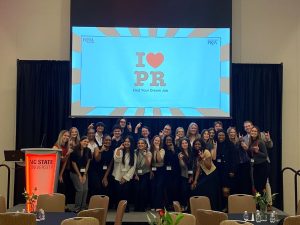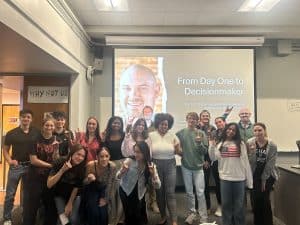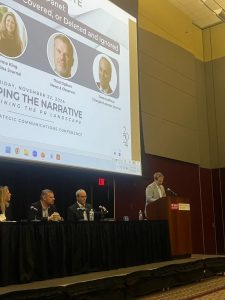As a Gen Z college student, I’ve seen LinkedIn grow into a must-have tool for landing jobs and internships. In fields like public relations, having an online presence isn’t just helpful—it’s expected. I’ve even been asked to include my LinkedIn profile when applying for internships. So, how do you stand out in a sea of profiles? Let’s walk through how to build your personal brand on LinkedIn.
Optimize Your Profile
When building your profile, it’s essential to optimize LinkedIn’s “About” features to reflect a polished and professional personal brand. One common mistake I’ve seen is using selfies or casual photos as a profile picture. Instead, choose a headshot that presents you in a professional light. This is often the first impression future employers will have of you. The same goes for your banner image; make sure it aligns with your career goals or personal brand. Don’t overlook your headline and “Summary” section, either. These areas are key to telling your professional story of who you are, what you’ve accomplished and where you’re headed.
Showcase Your Experience
Your LinkedIn profile is the perfect place to showcase your experiences and skills. Use this space to highlight past internships, jobs, and other career-related opportunities. Under each role, be sure to clearly explain what you accomplished; whenever possible, include quantifiable results, like increasing social media engagement by a specific percentage. LinkedIn also gives you the freedom to expand beyond what fits on a one-page resume, so take advantage of that flexibility. Don’t forget to list relevant skills, especially those tied to your target industry, like public relations. These keywords can help recruiters find your profile more easily.
Post with a Purpose
Just like with a traditional brand, consistency and strategy are key when posting on LinkedIn. Every post should have a clear purpose. Don’t post just for the sake of staying active. Whether you’re highlighting a professional achievement, sharing insights from a volunteer experience, or reflecting on a networking event, make sure your content aligns with your personal brand. Remember, everything you share contributes to how others perceive you. It’s also important to engage with others on the platform. Reacting to, commenting on, or sharing posts with your own thoughts not only builds connections but also helps boost your visibility in the algorithm.
Online Networking
Networking is a major part of LinkedIn’s value. Personally, I focus on building meaningful connections with professionals in roles or at companies I’m interested in. When sending a connection request, always include a personalized note—it makes a big difference. A simple message like, “It was great meeting you at my college’s job fair last Thursday,” helps establish context and build rapport. When done thoughtfully, this kind of outreach can lead to a coffee chat or even your next job interview. Don’t be afraid to reach out, but do keep in mind that many professionals receive dozens, if not hundreds, of messages, so be patient and courteous.
If you’re looking for more tips on building a strong personal brand, connect with our experts on LinkedIn at NP Strategy, where I’m currently interning this summer. And who knows? By following our C-Suite leaders, you might just discover your next opportunity in public relations like I did!


